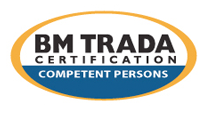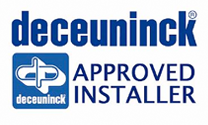Home Insurance and Conservatories
One home improvement issue that confuses a lot of people is that of insurance for conservatories. If you move in to a building that has a conservatory already attached to it, then any new policy that you take out will include the conservatory, however adding a conservatory to an existing policy is a little more confusing.
Getting an Existing Conservatory Insured
In most cases, existing conservatories are covered under standard home contents and buildings insurance, provided that the conservatory is a permanent structure that is properly constructed. Most insurance companies will treat such a structure as a part of the building itself, so the cost of your conservatory will be included in any building’s insurance. If the conservatory is secure (with proper locks and window glazing) then its existence should not affect any home contents claims related to burglary. Most insurers will also cover car ports as well, assuming that they are properly constructed.
Building a New Conservatory
If you are building a new conservatory, you must notify the insurance company before the builders start work. The cost of the conservatory will need to be added to your buildings policy, and this may mean that your premiums increase. Your home contents insurance policy will also need upgraded, in order to cover any additional items that you will be storing in the conservatory.
If you are not planning on spending a lot of money on decorating and furnishing the conservatory then your existing home contents policy may be adequate, however it is worth taking an inventory of all of the valuables in your home. All too often, new home owners take out modest home contents insurance when they move in to a new property, and then fail to upgrade it as they acquire new items. In the event of a flood, fire or burglary those home owners run the risk of discovering that only part of their property was covered.
What to Ask Your Insurance Company
Most buildings insurance policies do not cover damage to your property caused by building work, nor do they cover negligence on the behalf of your contractors, or the theft of any building materials that were going to be used in the construction of the conservatory. A good contractor will offer an insurance backed guarantee, and have their own Public Liability policy, so you should not need to worry about those possibilities. If you have any concerns, talk to the contractors and to your own insurance company for advice.
Keeping Your Premium Low
One of the main reasons that people are so confused about insurance policies for conservatories is that, just a few years ago, there was a lot of news coverage about insurers who were refusing to pay out for burglary related claims if the thief gained entry through a conservatory door or window. The reason for this was that the doors and windows were not secure, so the insurance companies were claiming negligence on the part of the home owner. This sort of thing should not be an issue today.
If you are getting a new conservatory built, then there are several things that you can do to keep the building secure, and also to prevent damage to your property. Things to consider include:
Construction - typically, conservatories are made from timber, PVC-U or aluminium. These are all fairly strong materials so you should not need to worry about a high quality conservatory built by an approved contractor. You can increase the security of the structure by asking for the windows to be installed with laminated safety glass on the inner pane.
Alarms - Extend your home’s burglar alarm to include the conservatory. If you have CCTV, try to have at least one camera covering the area around the conservatory. It is also a good idea to install a smoke alarm and a carbon monoxide detector - especially if you will be using free-standing heating to keep the conservatory warm in the spring and autumn.
Doors - A lot of home owners choose to keep the existing external doors from the rear of the house when they install a conservatory. This is a good idea, because it offers an additional layer of security. If you decide to remove the current external door and replace it with a patio-style door, make sure that you use reinforced doors, and that the glass is secure. Toughened safety glass is actually surprisingly easy to break open with a sharp tool, without making a lot of noise. Laminated glass is much more expensive, but offers better security.
Windows - Make sure that all of the windows in the conservatory are lockable. If you do not plan on opening some of the windows, consider screwing them shut. If there is an automatic opening roof vent on top of the conservatory, screw a grille to the underside to prevent enterprising thieves from prising the vents open.
Maintenance - Your conservatory will need to be cleaned and maintained on a regular basis. Failure to look after the conservatory could cause mold and mildew to build up, or allow damp to take hold in your home. This sort of damage, if caused by lack of maintenance, may not be covered by your insurance policy.
Another thing to consider is the kind of items that you keep in the conservatory. Consider using blinds or net curtains to prevent passers by from looking inside the conservatory while it is not in use. Keep the amount of items in the conservatory to a minimum, and do not leave valuables such as laptop computers or portable gaming devices lying around in plain view in the conservatory.
Every insurance company has its own rules, so before you purchase a policy you should always read the terms and conditions. If you are planning on having building work done in your home, do not assume that your existing policy will cover the new work. If you fail to notify the insurance company that your property has been altered, then your policy could become invalid, and that is not something that you want to find out at the last minute, when you need to make a claim.










Be the first to comment.